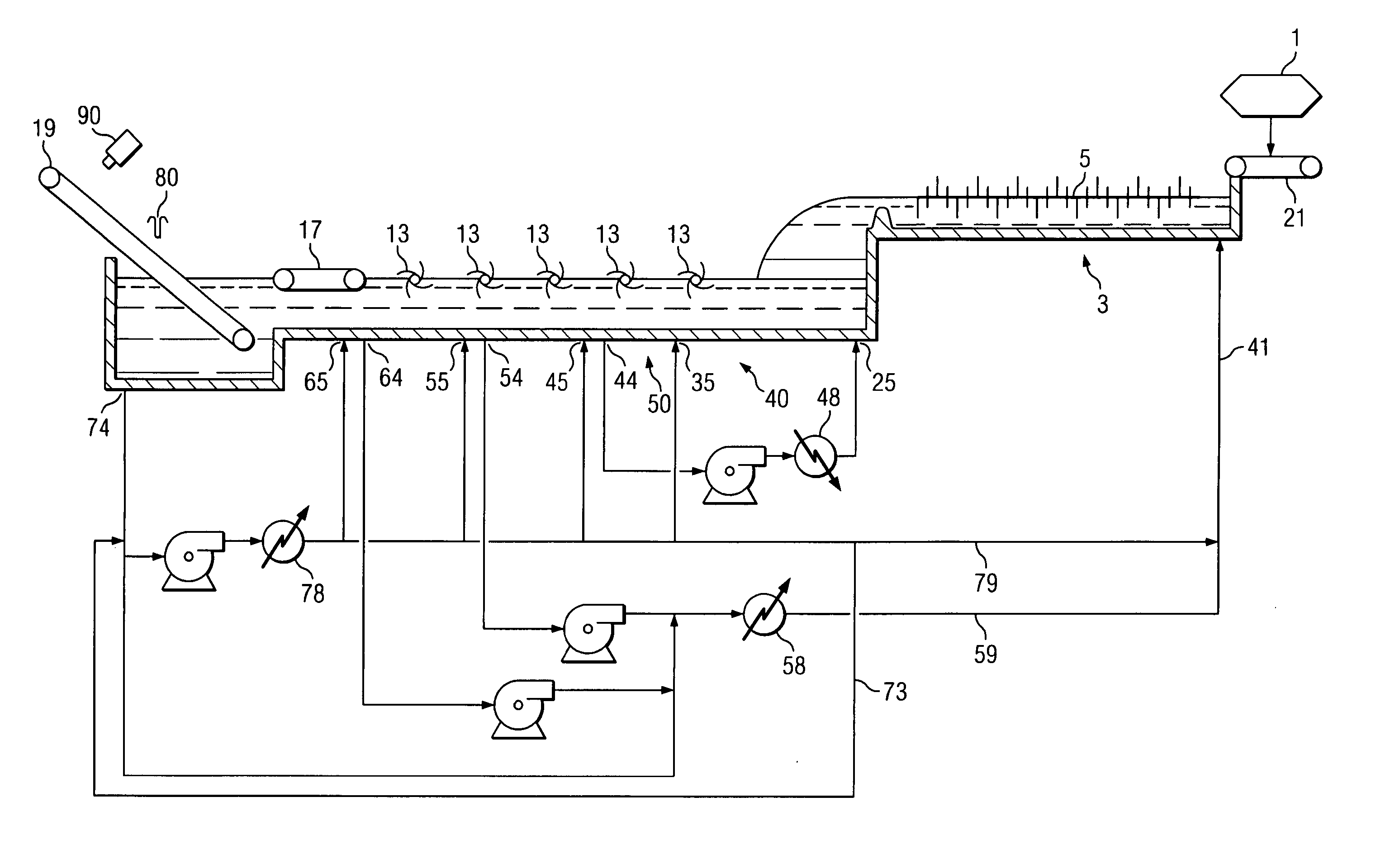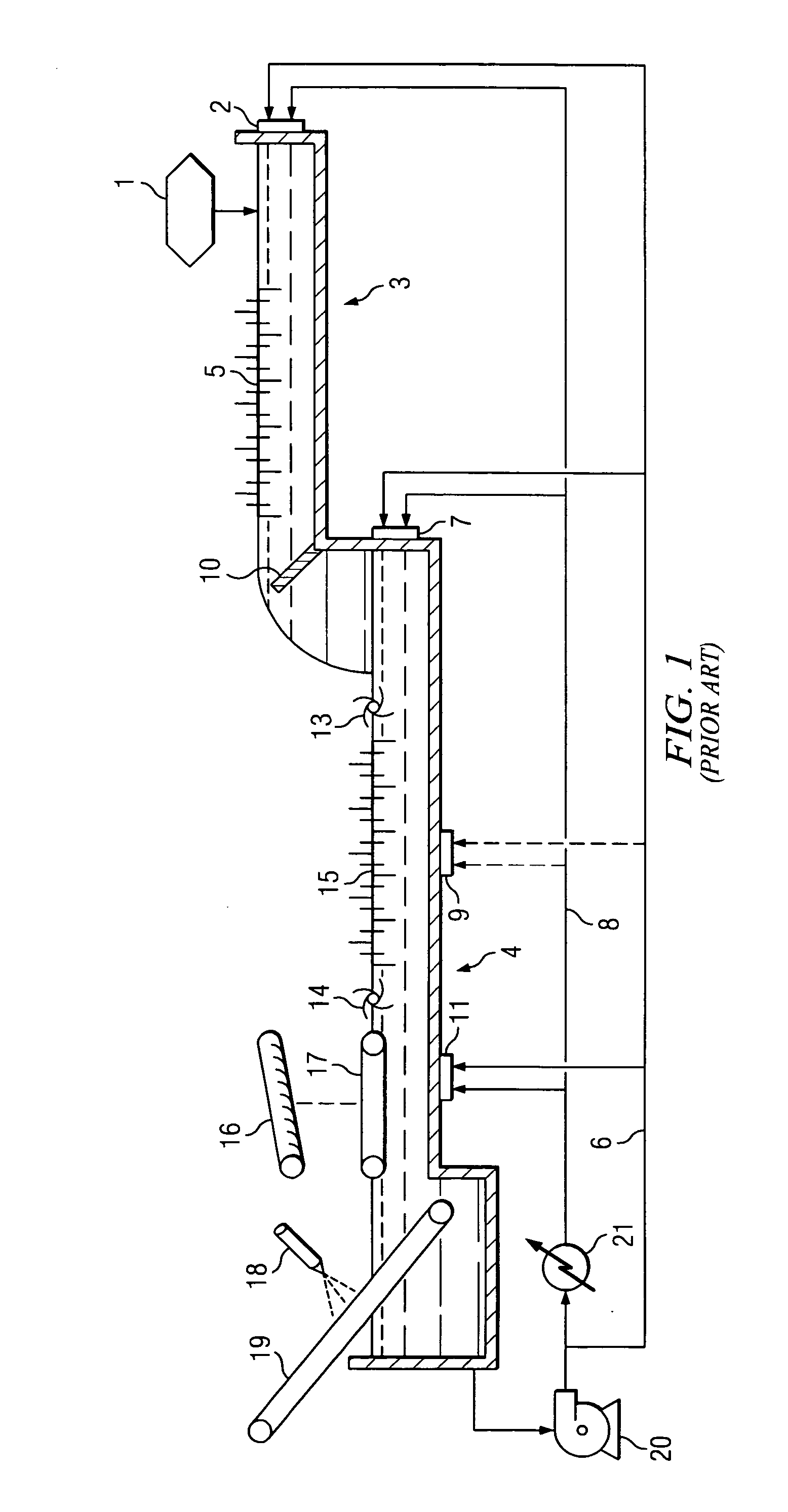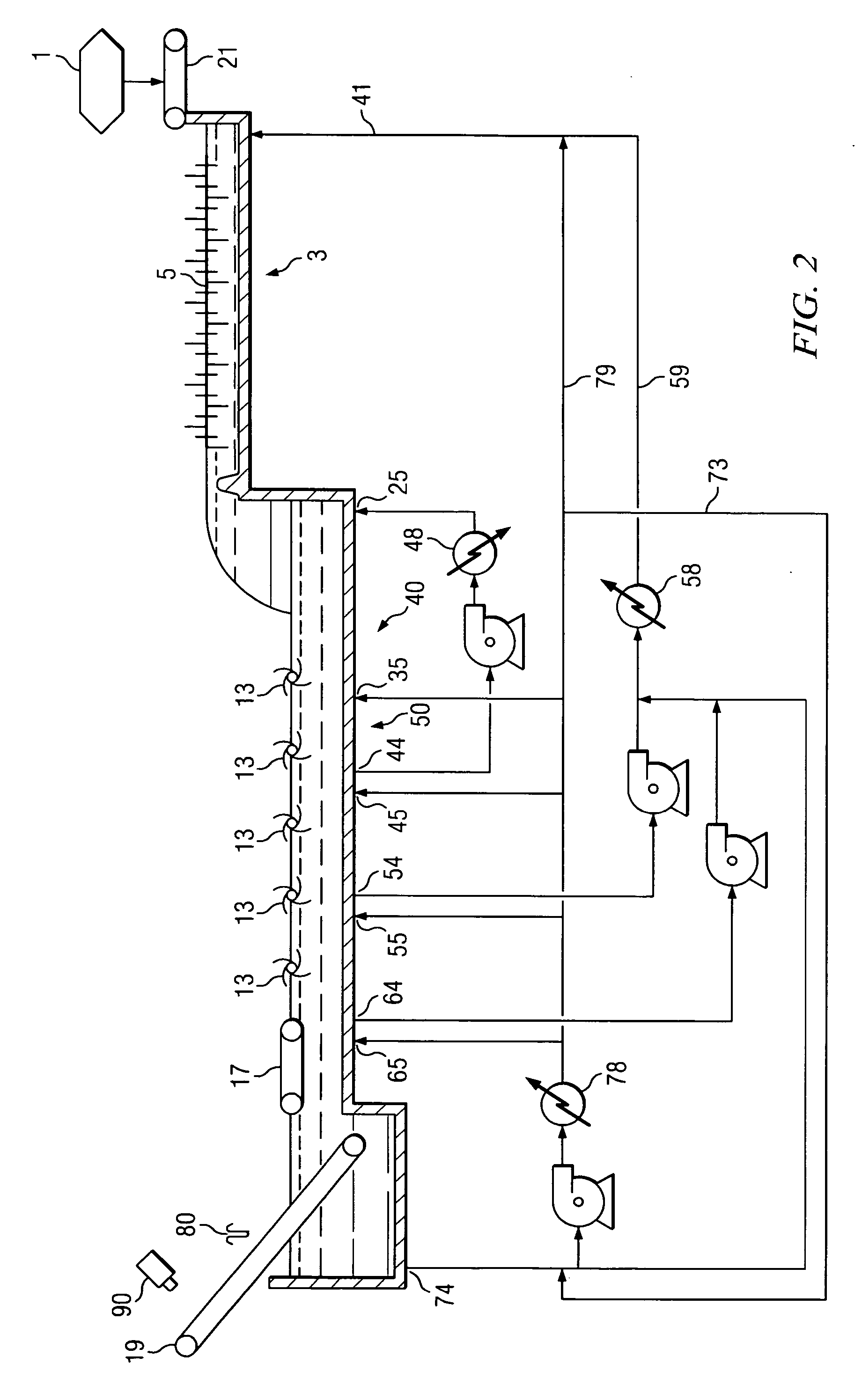Method for continuously making kettle style potato chips
- Summary
- Abstract
- Description
- Claims
- Application Information
AI Technical Summary
Benefits of technology
Problems solved by technology
Method used
Image
Examples
example
[0035] The following is a specific example of one embodiment of the invention. Approximately 4000 pounds per hour of unwashed peeled potatoes (corresponding to approximately 1100 pounds per hour of finished product) were sliced to a thickness of about 0.062 inches onto a high speed belt 21 and then placed in a flume 3. Hot oil at 316° F. (158° C.) was pumped into the flume 3 at about 193 gallons per minute (730 liters per minute). The potato slices had a residence time of approximately 15 to 20 seconds in the flume 3. The potato slices were then fed into the upstream portion of the fryer 40. Hot oil at a temperature of about 262° F. (128° C.) from a mid-section portion of the fryer was pumped at 85 gallons per minute (320 liters per minute) from a first outlet 44 through the hot oil cooler 48, resulting in an oil temperature ranging from about 230° F. (110° C.) to about 248° F. (120° C.) in the upstream portion of the fryer 40. The potato slices were kept in this temperature range f...
PUM
 Login to View More
Login to View More Abstract
Description
Claims
Application Information
 Login to View More
Login to View More - R&D
- Intellectual Property
- Life Sciences
- Materials
- Tech Scout
- Unparalleled Data Quality
- Higher Quality Content
- 60% Fewer Hallucinations
Browse by: Latest US Patents, China's latest patents, Technical Efficacy Thesaurus, Application Domain, Technology Topic, Popular Technical Reports.
© 2025 PatSnap. All rights reserved.Legal|Privacy policy|Modern Slavery Act Transparency Statement|Sitemap|About US| Contact US: help@patsnap.com



